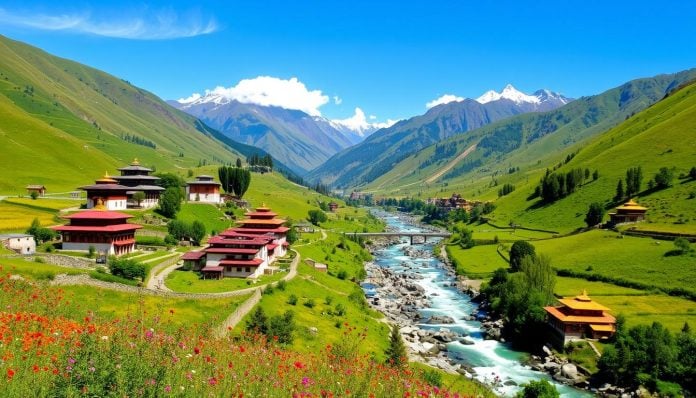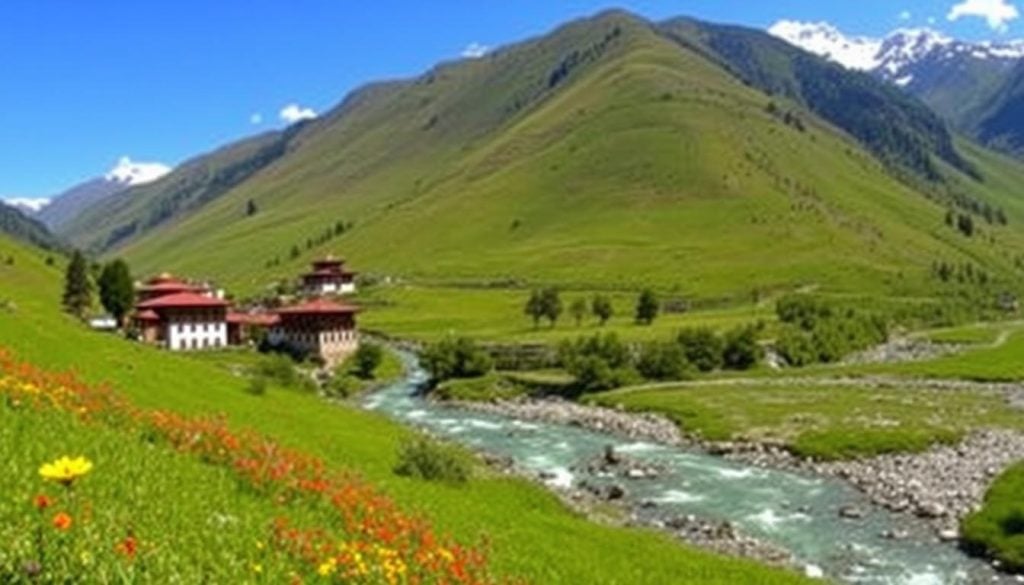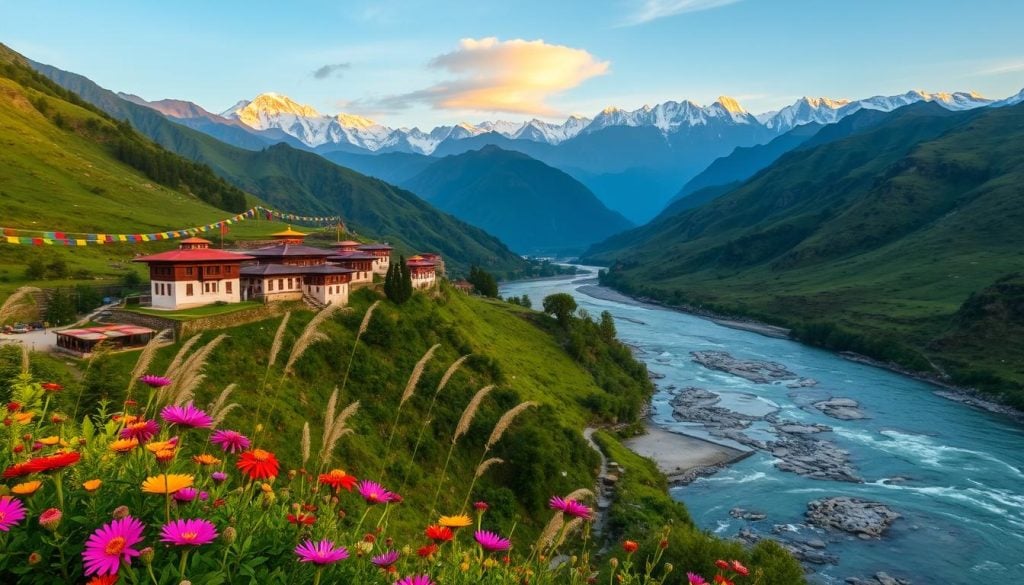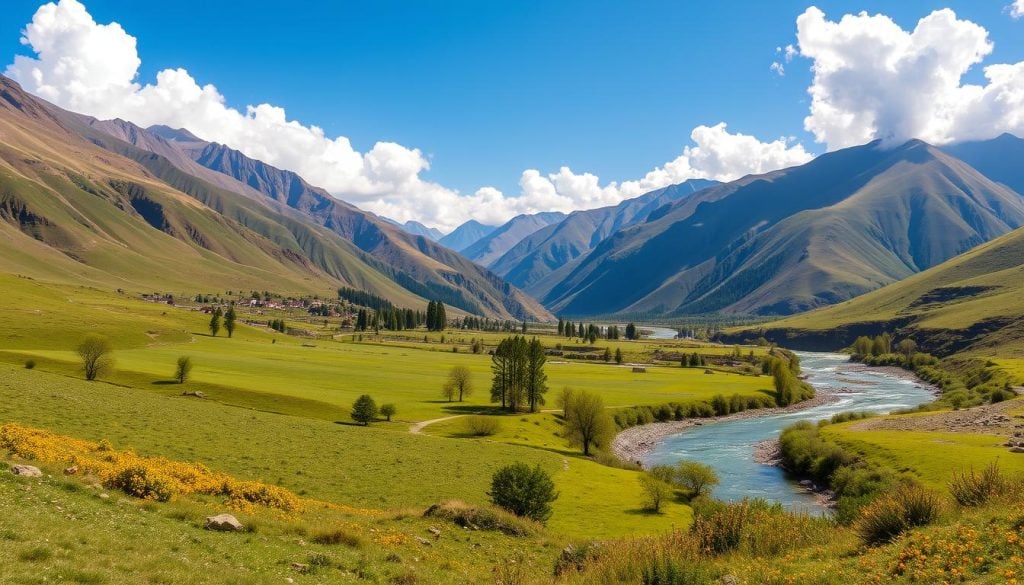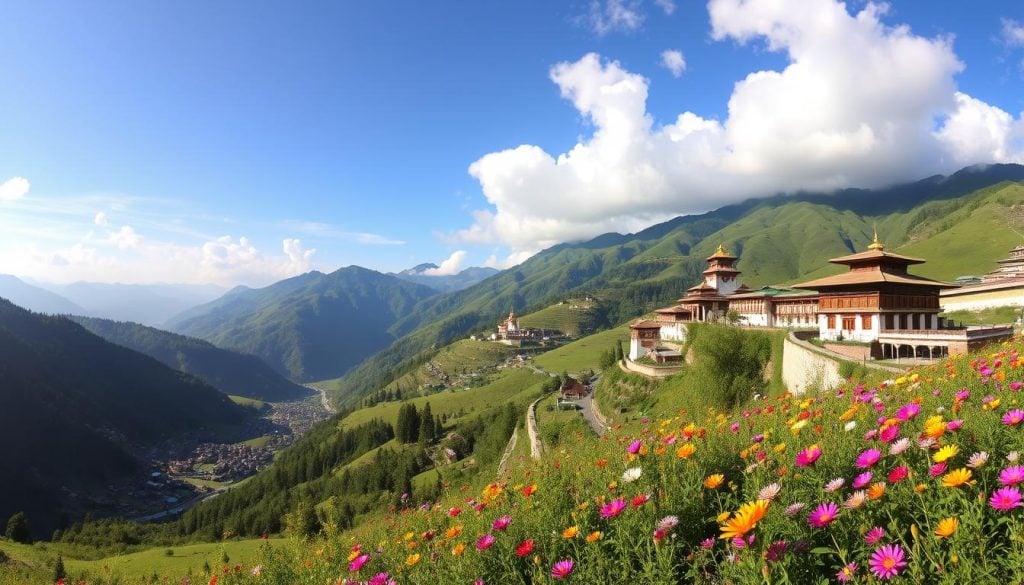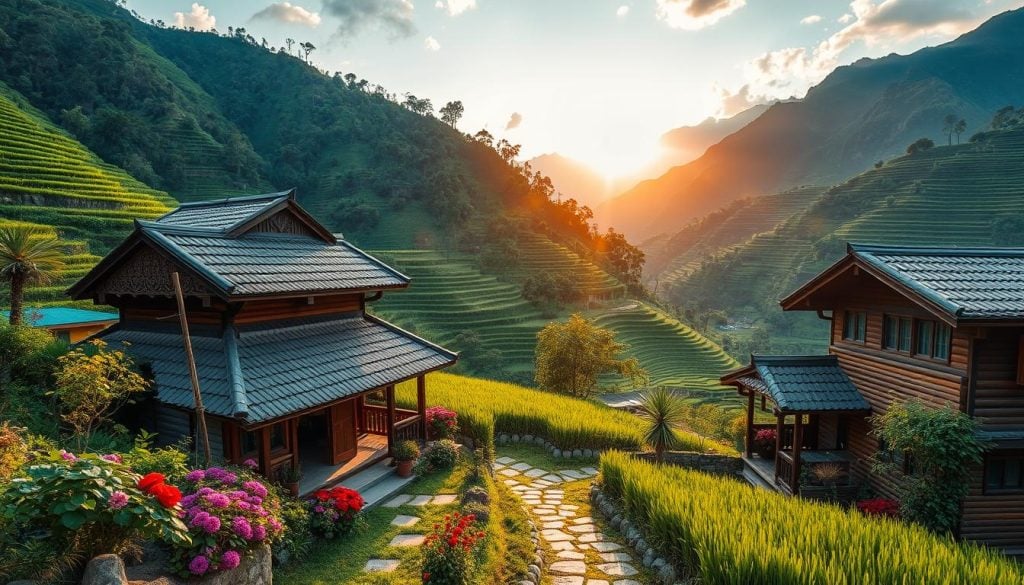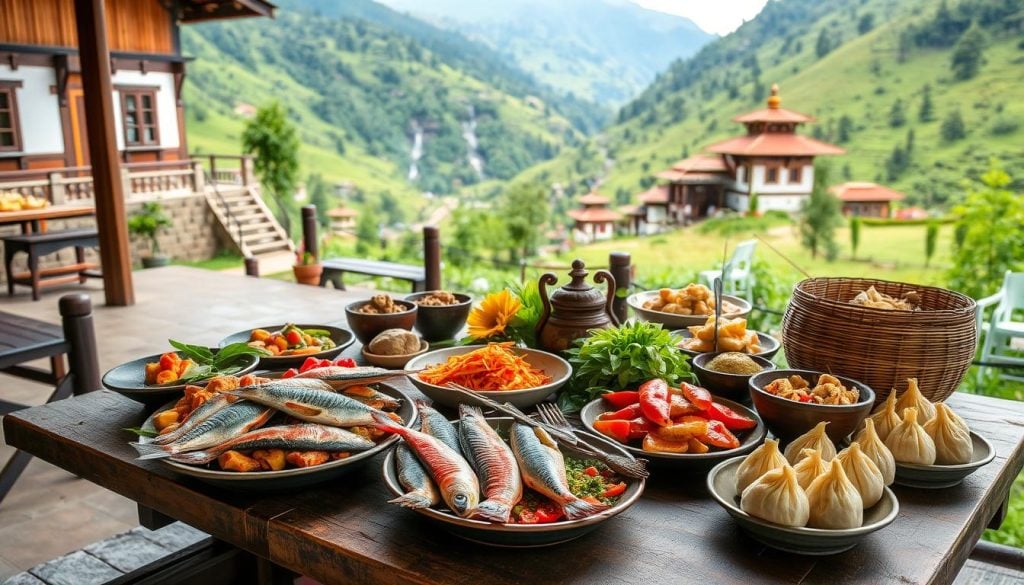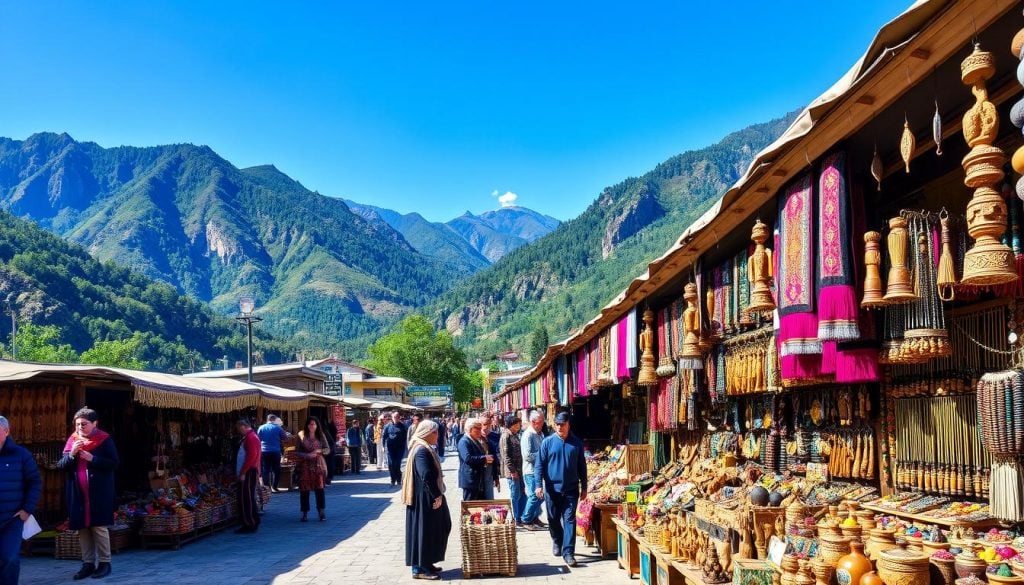Ever wanted to visit a place so peaceful that time seems to pause? Haa Valley in Bhutan is that place. Hidden from the busy world, it offers stunning views and rich culture. Here, you’ll find over 1706.8 sq. km of untouched beauty and traditions waiting for you.
This valley was unknown to most until 2002, making it a hidden jewel of Bhutan. Imagine exploring old monasteries, meeting friendly locals, and trying their food, all amidst incredible views. This article will show you the top 10 things to do here. Ready for an adventure that will open your eyes to a new kind of travel? Let’s discover what Haa Valley has in store!
Introduction to Haa Valley
Haa Valley is in Bhutan and is quite small, covering 1,760 square kilometers. It’s located southwest of Paro, surrounded by beautiful alpine forests and high mountains. This place is where you truly connect with nature and the local culture in a special way.
The valley is important because it’s close to the India-China-Bhutan border. Until 2002, tourists couldn’t visit Haa Valley. This has kept its traditional Bhutanese life very authentic. Most people here farm or herd, growing food like rice, potatoes, and chilies.
One key site is Lhakhang Karpo, the White Temple. King Songtsen Gampo started it. It’s not just a temple, but also a monastery and school for Buddhist monks. This place is quieter than other religious sites in Bhutan, making it very peaceful.
Haa Valley offers stunning views and a deep cultural history, making it a key part of Bhutan tourism. You can see it from Chele La Pass, which is very high up, or find peace at Lhakhang Karpo. It’s an amazing place for an adventure in Bhutan.
Overview of Haa Valley Attractions
Haa Valley is a hidden gem with many attractions. It covers around 1706 sq. km, making it one of the smaller Dzongkhags. This valley offers beautiful landscapes and cultural landmarks. You can see ancient monasteries and join in local festivals. The natural beauty of Haa Valley is truly spectacular.
Lhakhang Karpo and Lhakhang Nagpo are key spiritual sites. For those who love the outdoors, there are many hiking and biking trails. Enjoy the peace of Juneydrak Hermitage and Yangthang Goemba. You will also love the scenery of the Torsa Strict Nature Reserve.
The valley is well-known for its agriculture. Terraces on hillsides grow rice, wheat, and barley. Farmers also raise cash crops like potatoes, apples, and chilies. This shows the rich agricultural background of Haa Valley.
The annual Summer Festival is a must-see. It showcases the lifestyle and traditions of local nomadic herders. This event lets you see the vibrant culture of the valley. Haa Valley is full of enriching attractions that promise an unforgettable experience.
Top 10 Things to Do in Haa Valley
Visiting Haa Valley offers stunning experiences. You can dive into its rich culture and beautiful landscapes. The region is filled with cultural treasures and tasty local food. You’ll encounter amazing sites and unique flavors that spotlight the essence of Bhutanese paradise.
Discover cultural gems and historical sites
Haa Valley is home to the Lhakhang Karpo and Lhakhang Nagpo. These temples reveal the local beliefs and heritage. You’ll find landmarks like Haa Gompa and The Black and White Temples. They’ll enrich your cultural journey in Haa Valley.
Experience local food and delicacies
Trying local foods is a highlight of Haa Valley. Hoentay, a traditional dumpling, is a must-try. Homestays provide authentic meals with local ingredients. Tourist meals are around Nu. 300, while local meals are about Nu. 200. Exploring Haa Valley’s cuisine is unforgettable.
Don’t miss a traditional hot stone bath, which costs Nu. 500 extra. The National Research Center for Riverine and Lake Fishery lets you see trout species. These include rainbow, brown, and snow trout. Haa Valley’s rich food and culture make it a top Bhutan destination.
Outdoor Activities in Haa Valley
Haa Valley is a wonderland for those who love the outdoors. It’s in one of Bhutan’s smallest Dzongkhags. The area’s stunning scenery calls out for exploration. It’s an ideal spot for hiking and mountain biking thanks to its beautiful forests and peaceful mountains. Every adventure here offers amazing views and unique experiences. This highlights the beauty of Bhutan’s outdoors.
Hiking in the pristine landscapes
Hiking trails in Haa Valley are unforgettable. The Haa Valley View Trail, for example, immerses you in nature’s beauty. It starts with an easy climb, leading to amazing views of the valleys below. The trails are filled with greenery, wildflowers, and clear skies. Haa Valley is perfect for both experienced hikers and beginners. It mixes calmness with excitement.
Mountain biking through the hills
Mountain biking in Haa Valley is thrilling. The hills offer great paths for cyclists, presenting beautiful landscapes to explore. Riding through forests and open spaces gives stunning views. Haa Valley has exciting trails for every level of biker. It’s a place for unique mountain biking adventures.
| Activity | Description | Best For |
|---|---|---|
| Hiking | Enjoy an array of trails, including the scenic Haa Valley View Trail. | All skill levels |
| Mountain Biking | Explore thrilling routes through hills and forests. | Intermediate to advanced bikers |
| Nature Observation | Discover diverse flora and fauna while hiking or biking. | Nature enthusiasts |
Cultural Experiences in Haa Valley
Visiting Haa Valley connects you with Bhutan’s local traditions. You’ll be drawn into the vibrant world of the Haaps. This includes activities like weaving, butter churning, and rice farming. Each activity provides a glimpse into the community’s daily life, deepening your understanding of their heritage.
Engage with local traditions and customs
In Haa Valley, you’ll see unique rituals and festivals of Bhutan. Locals often share their crafts and skills with visitors. This builds a sense of community and lets you form lasting bonds with the Haaps.
Participate in the Haa Summer Festival
The Haa Summer Festival happens every July. It’s a vibrant event celebrating the area’s culture and traditions. Visitors enjoy traditional food, local performances, and activities that reflect Bhutanese festivals. Going to this festival gives you an authentic look into Haa Valley’s lifestyle. It’s an event travelers should not miss.
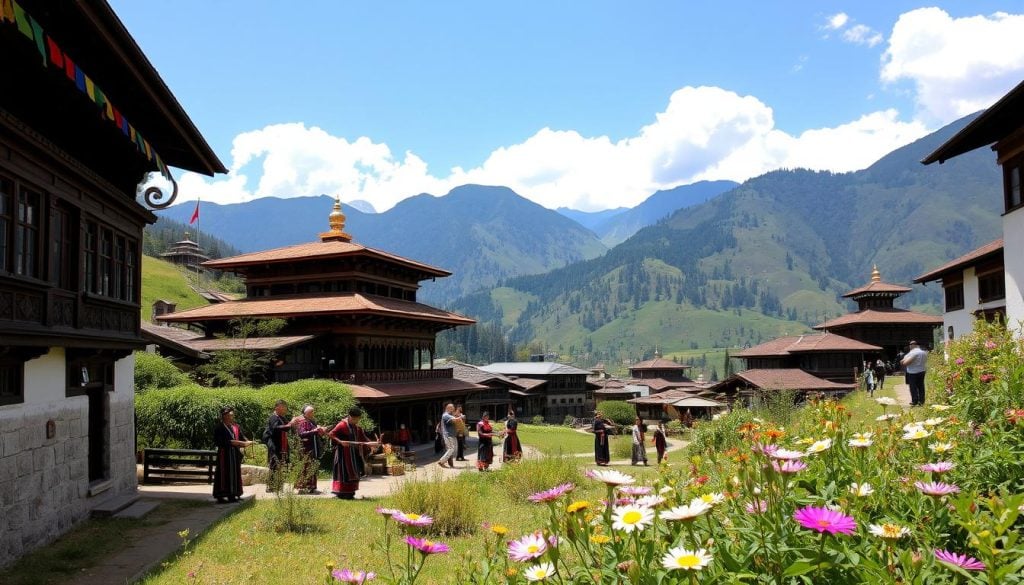
| Aspect | Details |
|---|---|
| Festivals | Haa Summer Festival – showcases local culture through food, music, and dance. |
| Cultural Practices | Local weaving, butter churning, rice cultivation. |
| Community Engagement | Opportunities to connect with locals and learn traditional skills. |
Best Sightseeing Spots in Haa Valley
Embarking on Sightseeing in Haa Valley, you’ll see amazing views and rich culture. Every place tells its own story. This shows the historic importance of this quiet area in Bhutan. Around 14,000 people live here, offering unique experiences at its famous historical sites.
Visit Dobji Dzong and its historical significance
Dobji Dzong stands out as an amazing fortress from the 17th century. It sits high on a hill, requiring a short trek. This walk offers stunning views of mountains and valleys. As a key historical site in Bhutan, this dzong reflects traditional Bhutanese architecture well, showcasing the area’s rich culture.
Explore Lhakhang Karpo and Lhakhang Nagpo
The Lhakhang temples are must-see places for their spiritual and cultural importance in Haa Valley. The Lhakhang Karpo (White Temple) and Lhakhang Nagpo (Black Temple) were made in the 7th century. They show off the great architectural style of that time. Visiting these temples in Haa Valley lets you explore local legends and traditions. It helps you understand the valley’s deep spiritual meaning.
| Attraction | Significance | Best Time to Visit |
|---|---|---|
| Dobji Dzong | 17th-century fortress, architectural marvel | April – June, October – March |
| Lhakhang Karpo | White Temple, cultural center | April – June, year-round |
| Lhakhang Nagpo | Black Temple, spiritual significance | April – June, year-round |
These sightseeing spots add a lot to Haa Valley’s history and culture. They are must-visits on your trip to this magical place.
Travel Tips for Visiting Haa Valley
Planning a trip to Haa Valley can be exciting. Make sure it’s enjoyable and free from stress. Think about key things: how to get there, the best times to go, what to take, and where to stay.
How to reach Haa Valley and best times to visit
Haa Valley is about 106 kilometers away from Thimphu. The ride there is filled with beautiful views, especially from Thimphu or Phuntsholing. Buses run every other day, but taxis are hard to find. So, consider renting a car or arranging a ride ahead of time. The best times to visit are from March to May and September to November. During these months, the weather is great for being outdoors.
Essential packing tips for your trip
Packing for Haa Valley? Remember the weather can change a lot during the day. Layering is key. Here are some must-haves for your trip:
- Warm clothes for cold evenings and mornings
- Sunscreen for protection against the strong sun
- A good camera to capture the scenery
- Hiking gear for adventures
- Local currency, since you might not always be able to use cards
Where to stay in Haa Valley
In Haa Valley, you’ll find cozy homestays and charming resorts. Local homestays give a real feel of the area, helping families there. Places like the Heritage Resort and Lechuna Heritage Lodge offer nice rooms and extra touches. It’s smart to read reviews and book early. That way, you’re sure to have a place to stay in this stunning part of Bhutan.
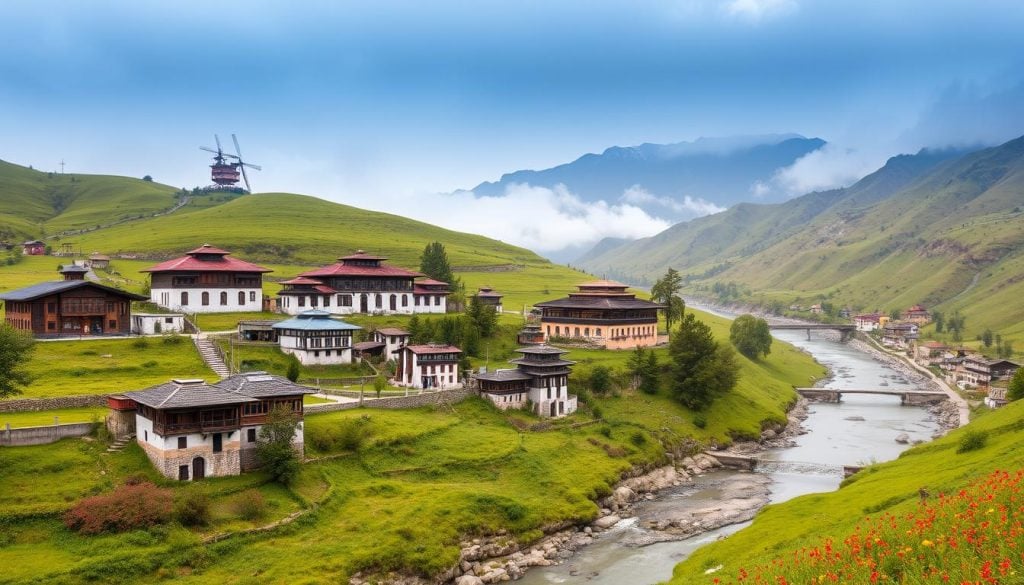
Unique Experiences: Homestays in Haa Valley
Staying in Haa Valley homestays lets you dive into the real Bhutanese life. You’ll see local traditions up close, showing a diverse cultural mix. Now, around 70% of visitors prefer homestays over hotels for a true cultural experience. This move helps local tourism and creates a win-win for guests and hosts alike.
Benefits of staying in a local homestay
Homestays in Haa Valley mix comfort with cultural insights perfectly. There are over 20 licensed homestays, one being a 200-year-old farmhouse rich in history and hospitality. These places are often cheaper than hotels, attracting about 65% of budget-conscious travelers. Plus, you can enjoy homecooked meals for Nu.300 each, trying out special local foods.
Activities offered by homestay families
Joining in family activities at Haa Valley homestays is fun. Many hosts teach cooking classes, showing how to make traditional dishes like Ema Datshi and Hoentay. Up to 80% of homestays offer unique activities such as local archery, herbal hot stone baths, and farm visits. Helping with chores like milking cows or making butter brings you closer to the culture. These experiences help boost homestay popularity, with a 30% rise in demand recently.
Local Cuisine: Must-Try Foods in Haa Valley
Visiting Haa Valley? Don’t miss out on the local cuisine. It’s full of unique flavors and traditional dishes. These foods show the deep heritage of Bhutanese cooking. You’ll find an array of dishes that use local ingredients and methods.
Indulge in Hoentay, a local delicacy
Hoentay is a must-try in Haa Valley. It’s a tasty dumpling made from buckwheat flour. Inside, it’s filled with fresh veggies like spinach or turnip leaves. Hoentay brings you the traditional tastes of the area. It’s a great way to dive into Bhutanese culture through food.
Fresh trout from the National Research Center
The National Research Center for Riverine and Lake Fishery in Haa is special. It lets you try freshly caught river trout. In Haa Valley, you can enjoy trout, including rainbow and brown. Local restaurants and homestays cook up delicious trout dishes. They showcase the area’s fresh seafood. This offers a tasty experience you’ll remember.
Shopping for Local Souvenirs in Haa Valley
When you visit Haa Valley, buying local souvenirs is special. It lets you connect with Bhutan’s culture and crafts. You can find handcrafted gifts that are unique. They make excellent keepsakes and help the local economy too.
The artisans here use their skills to make items that show Bhutan’s history and nature.
Buying handcrafted gifts and souvenirs
In Haa Valley, you’ll see many locally made products. About 72% of Bhutan is covered in forests. This means you’ll find amazing wooden items.
- Intricately carved wooden utensils
- Decorative cabinets and tables
- Jewelry boxes and mirror frames
Hand-woven textiles are also popular. Artisans use various materials to make colorful shawls and clothes. These showcase Bhutanese artistry. Also, Daysho paper is used for greeting cards, diaries, and gift wraps.
Supporting local artisans and communities
Buying fair trade items in Haa Valley supports local artisans. It also keeps traditional crafts alive. When looking for unique souvenirs, think about:
- Dzi Beads, the most expensive beads
- Gold and silver jewelry with detailed designs
- Cane and bamboo handicrafts, like baskets and mats
- Decorative carved masks for festivals
Your shopping helps support sustainable practices and local artisans. They work hard to keep Bhutan’s cultural heritage alive. Enjoy your shopping and help the community at the same time.
| Type of Souvenir | Materials Used | Artisan Benefit |
|---|---|---|
| Wooden Products | Wood | Supports local workshops |
| Hand-woven Textiles | Cotton, Silk | Promotes traditional weaving |
| Handmade Paper | Forest resources | Encourages sustainable practices |
| Cane and Bamboo Crafts | Bamboo | Fosters community craftsmanship |
Seasonal Highlights in Haa Valley
Haa Valley is a sight to behold as the seasons change. Each turn of the season brings new experiences for visitors. Expect stunning views, fun festivals, and one-of-a-kind cultural events on your trips. The festivals are a big deal here, showing off local culture. They are something you definitely want to experience.
Events and festivals to mark on your calendar
The Haa Summer Festival is the highlight here. It happens in July. Visitors get to meet locals, try traditional dishes, and watch folk dances. Make sure to visit during this time for a full cultural immersion in Haa Valley.
What to expect during different seasons
Here’s what each season offers:
- Spring (March to May): It’s a colorful season, perfect for photography fans.
- Summer (June to August): Great for enjoying festivals and getting to know Bhutan’s culture.
- Autumn (September to November): The changing leaves provide peaceful and scenic hikes.
- Winter (December to February): Despite the cold, the snow-covered views are mesmerizing.
Traveling to Haa Valley through different seasons shows off its natural and cultural beauty. With activities all year round, plan your trip for the best experience. Haa Valley is waiting to offer you an adventure you won’t forget.
Conclusion
Haa Valley is a truly captivating place you shouldn’t miss. It is full of culture and history. This area offers beautiful landscapes and exciting outdoor activities. It also has ancient temples like Lhakhang Karpo and Lhakhang Nagpo. These were built in the 7th and 15th centuries.
The architecture of these sites follows strict guidelines. This lets you appreciate Bhutanese culture’s artistry. Why visit Haa Valley? Think about the local traditions you’ll experience. And the authentic Bhutanese cuisine you’ll taste. Plus, the vibrant festivals like the Haa Summer Festival are not to be missed.
Whether you’re hiking through pristine landscapes or enjoying homemade meals, your trip will be adventurous. And filled with memories you won’t forget. As you plan your travels, remember Haa Valley is not just a scenic paradise.
It’s an invitation to connect with nature and dive into a unique cultural journey. Nestled in Bhutan’s heart, this serene haven will amaze you. It will make you want to come back again.

































